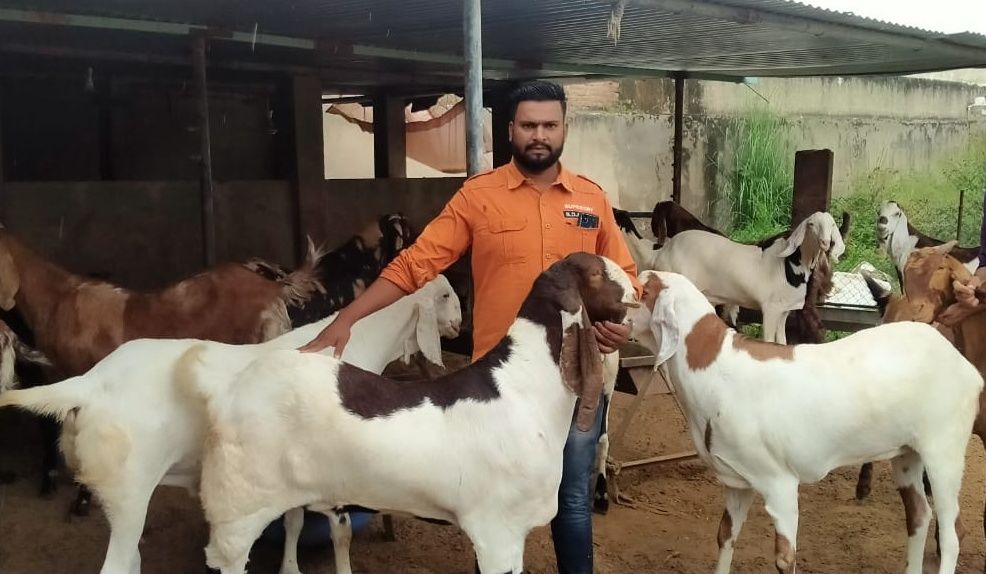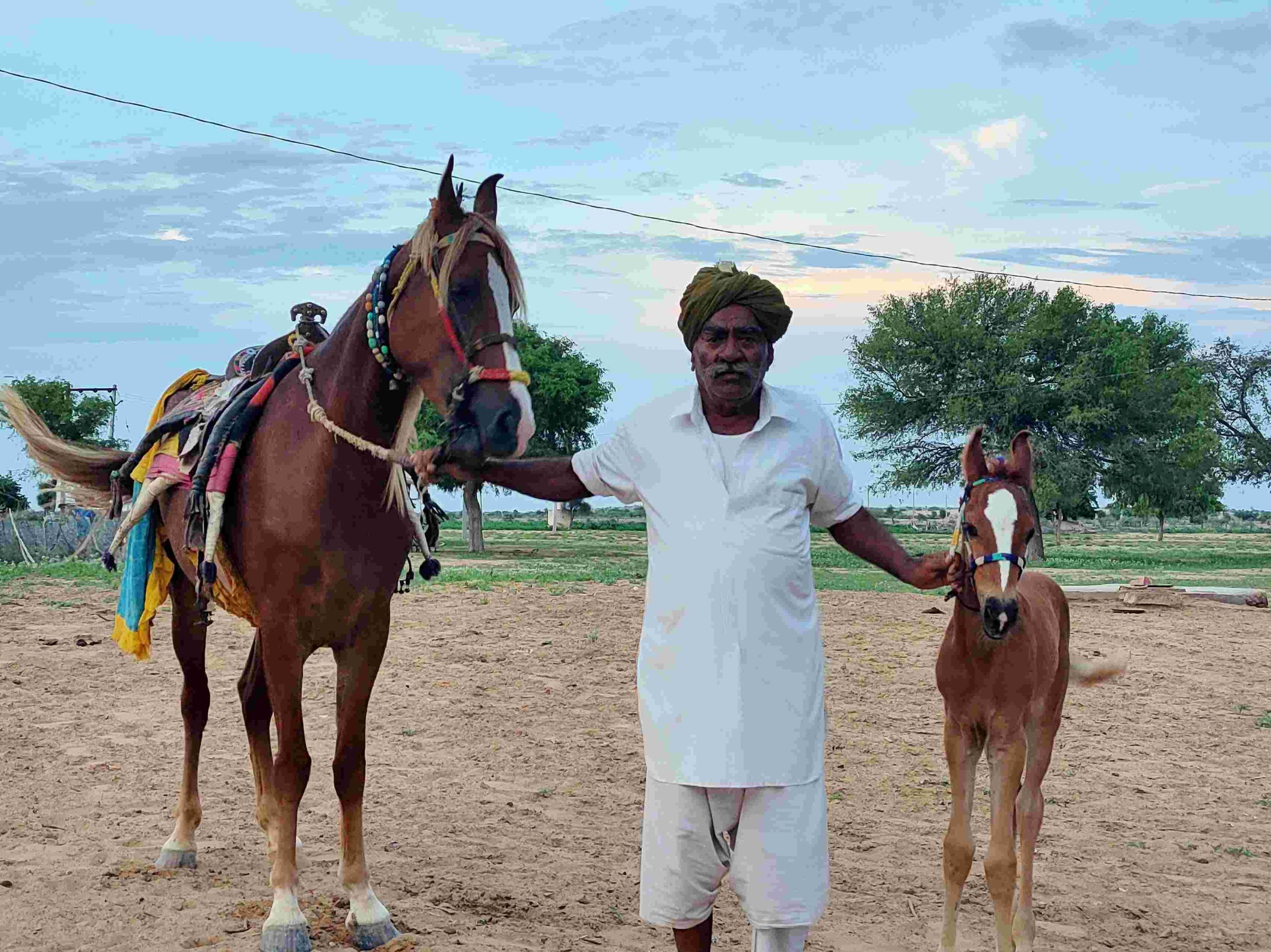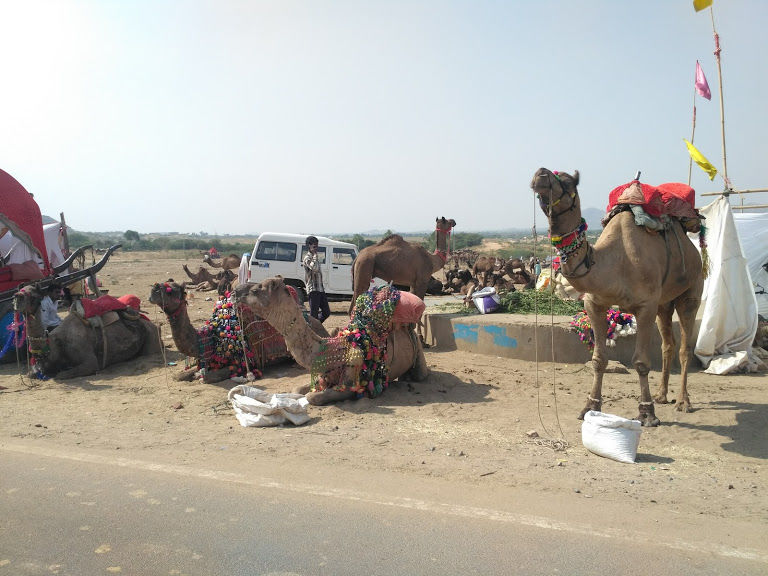Indefinite postponement of animal fairs in Rajasthan due to COVID-19 hits livestock rearers
Besides the difficulty in inter-state movement, no relief package from the state and poor sales that farmers and rearers face, the loss from the postponement of animal fairs runs into Rs 60 crore.


In Rajasthan, thousands of families derive their livelihood from raising livestock, but the novel coronavirus disease (COVID-19) crisis has left them facing a bleak future.
Those rearing big animals such as camels and horses have especially suffered, because the Rajasthan government has, post-COVID-19, indefinitely postponed all 10 major animal fairs held annually in the state. These include the Kartik Pashu Mela at Pushkar; Chandrabhaga Pashu Mela at Jhalawar; Gogamerhi Pashu Mela at Hanumangarh; Veer Tejaji Mela and Baba Ramdev Pashu Mela at Nagaur; and Mallinath Pashu Mela at Barmer. The state government will lose revenue because of this move, but livestock rearers face a more severe livelihood crisis, because there is no income, and upkeep of animals is expensive.
Official records (Annual progress report for 2019-2020, found in the Rajasthan assembly website) say the total income of animal farmers from the fairs was Rs 23.41 crore in 2019 and about Rs 30 crore in 2018. The loss from the postponement of animal fairs alone runs into Rs 60 crore this year.

Apart from these, over 250 animal fairs are organised at the panchayat or panchayat samiti level in Rajasthan. Of these, Shergarh, Agolai Mela of Jodhpur and Sindri Pashu Mela of Barmer are well known. According to the 19th Livestock Census Rajasthan (2012), there are 57.732 million livestock (including cattle, buffalo, sheep, goat, horse, donkey, camel and pig) and 8.024 million poultry in the state.
Farmers depending on their land and animal husbandry are already reeling under the loss of crop income due to locust attack and the lockdown, and the non-conduct of fairs has made it doubly difficult to handle.
The usually-busy Eid al-Adha sales also turned out to be a damp squib. Mohammed Asif Qureshi of Makrana in Nagaur district is a trader at the town’s famous goat market. “A year-old goat of good breed usually fetches about Rs 30,000. Last year during Eid, the price went up to Rs 55,000, but this time I got a maximum of Rs 15,000,” Qureshi told Gaon Connection. “I used to sell 50 goats every year; this time, I sold just 10. Ten goats are still with me. Their feed and upkeep costs money. Usually, the income from Eid would sustain my family through the year and fund further purchase. This year, everything is ruined. The government should soon help us,” he said.

Hundreds of cattle farmers and traders at Makrana Mandi have suffered steep losses. Local journalist Javed told Gaon Connection that the mandi usually sees buyers come in from 200 villages of 40 gram panchayats in Makrana, but this time the crowd had thinned down. “During Eid, between 8,000 and 10,000 goats and sheep are sold from here; this time, hardly 2,000 were sold.”
The low footfall at the mandi is attributed to three major factors. The misconception that the COVID-19 virus was spreading through meat; less cash flow that brought down demand; and movement restrictions of cattle traders who travelled from village to village.
Animal husbandry and the utility of animals had already taken a hit with many tasks taken over by machinery, and COVID-19 has only aggravated the problem in Rajasthan and other states. Demand has picked up for goats and sheep in Delhi and Maharashtra, but those rearing small animals find inter-state movement a huge challenge.
What the melas mean
Sumer Singh Bhati, living in Sanwata village of Jaisalmer, has 400 camels. “The Mallinath mela usually takes place in April, and sees visitors from Jaisalmer, Barmer, Jalore and Jodhpur district. Camel and horse herders from Gujarat visit too. An entire ecosystem, including those selling accessories and trinkets, depends on these melas. COVID-19 and government apathy has left us in the lurch,” he told Gaon Connection.
In 2016, the government launched the Ushtra Vikas Yojna (Camel Development Scheme). It provided financial assistance up to Rs 10,000 on the birth of a camel. “For the last two years, we have not received this. Our requests have been in vain,” said Bhati.
Virendra Singh, director, department of animal husbandry, Rajasthan, said the fairs have been called off this year, because “a large number of devotees turn up due to the religious importance of these animal fairs. We cannot afford the risk of infection, though we know of the economic loss to farmers and cattle farmers”.

Associated industries such as meat and dairy have also been impacted. Ajay Kumar Gahlot, former vice-chancellor of Rajasthan University of Veterinary and Animal Sciences, Bikaner, said that cattle farmers used to get a good price for their animals in the fairs. “Now, these people have to either sell their animals in the local markets at a lower price or bear the extra cost of further rearing. Upkeep of a camel costs about Rs 80,000 annually.”
Though the dairy business fell (the country sees an annual business of Rs 7 lakh crore to 8 lakh crore in milk), it recovered fairly fast. However, the market for dairy products has recovered only by one-third. “This is because social gatherings are limited and temples have not yet been opened in a big way. Weddings, parties and temple offerings make up a big percentage of the market for paneer, mawa and ghee,” Gahlot added.
Dr Kurien’s model is still relevant
ML Parihar, former director, animal husbandry, Rajasthan, called for empowering animal farmers, because red-tapism is the biggest impediment to development in villages. “Lack of policies saw pastures being destroyed and cattle farmers looked down upon. This is common across the country, but not in Gujarat, because the rural economy revolves around animal husbandry. The model promoted by Dr V Kurien has to be adopted,” Parihar said.
In Rajasthan, 55 per cent of the area is desert and about 75 per cent of its population is rural. As per 2019 records, the state has about 5.67 crore livestock, including 1.39 crore cows, 1.36 crore buffaloes, 79 lakh sheep, 2.08 crore goats and about 2.13 lakh camels. Agriculture and animal husbandry in Rajasthan contribute 22 per cent to India’s GDP. Farmers in Rajasthan rely on animal husbandry to tide over droughts and non-farming days. When that suffers, there is little to fall back on. There is a need for genuine change on the ground to ensure that these animals stay farmers’ best friends.

